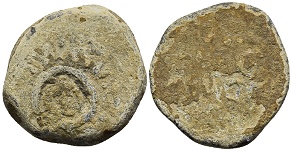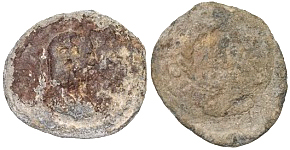Fine Coins Showcase
Antiquities Showcase
New & Reduced
Apr 15, 2024
Apr 14, 2024
Apr 09, 2024
Apr 08, 2024
Apr 07, 2024
Apr 06, 2024
Apr 05, 2024
Apr 04, 2024
Apr 03, 2024
Apr 01, 2024
Mar 31, 2024
Mar 30, 2024
Mar 29, 2024
Mar 28, 2024
Mar 27, 2024
Mar 05, 2024
Feb 18, 2024
Feb 12, 2024
Feb 11, 2024
Feb 09, 2024
Feb 01, 2024
Jan 24, 2024
Nov 19, 2023
Oct 23, 2023
Oct 22, 2023
Oct 18, 2023
Oct 14, 2023
Oct 07, 2023
Oct 05, 2023
Oct 03, 2023
Sep 28, 2023
Sep 26, 2023
Sep 22, 2023
Sep 21, 2023
Sep 19, 2023
Sep 18, 2023
Sep 13, 2023
Sep 11, 2023
Aug 01, 2023
Jul 28, 2023
Jul 17, 2023
Jul 16, 2023
Jul 09, 2023
Jun 26, 2023
Jun 11, 2023
May 04, 2023
May 03, 2023
May 01, 2023
Apr 06, 2023
Mar 30, 2023
Mar 29, 2023
Mar 28, 2023
Mar 26, 2023
Mar 25, 2023
Mar 17, 2023
Mar 16, 2023
Mar 15, 2023
Feb 27, 2023
Feb 05, 2023
Jan 18, 2023
Dec 31, 2022
Dec 15, 2022
Oct 09, 2022
Sep 27, 2022
Sep 24, 2022
Aug 29, 2022
Jul 11, 2022
Jul 10, 2022
Jun 17, 2022
Jun 14, 2022
May 30, 2022
Apr 11, 2022
Apr 09, 2022
Apr 02, 2022
Feb 04, 2022
Feb 02, 2022
Oct 05, 2021
Jun 23, 2021
Feb 02, 2021
Sep 30, 2020
Home ▸ Catalog ▸ |Themes & Provenance| ▸ |Denominations| ▸ |Tesserae||View Options:   | | | | | | Tesserae (singular: tessera) are ancient tokens. Most were made from lead, but other materials including bronze, bone, ivory, clay, glass and wood were also used. They were used as tickets for theaters, gladiator fights, ferry passage and even brothels. Tesserae liberalitatis were distributed as gifts by the Roman emperor or local government, often to the poor, and used as vouchers to exchange for grain, oil, or other goods. Some ancient lead "tokens" may have been used as small change coinage. |


Lead tesserae (tokens) were issued by the monarch to the poor to be redeemed for food and other commodities. Meshorer reports the lead tesserae of Alexander Jannaeus are found almost exclusively in TransjordanJD110536. Lead tessera, Hendin 6192 (S), Meshorer TJC M, Meshorer AJC D, HGC 10 645, aF, heavy example, weight 5.154 g, maximum diameter 18.0 mm, Transjordan mint, 95 - 76 B.C.; obverse Aramaic inscription: King Alexander Year 25, anchor (upside-down as if hanging on the side of a boat) inside circle; reverse traces of Aramaic inscription, King Alexander, with a border of dots; very scarce; $70.00 (€65.80)
Roman, Lead Votive or Tessera, c. 30 B.C. - 285 A.D.


The Greeks and Romans used the name "Ethiopian" for all Africans living south of the Sahara. We are uncertain of the specific origin, date, and purpose or use for this piece. It is an attractive and interesting mystery.AR98632. Lead tessera, VF, cast, very high sculptural relief, typical lead patina, irregular shape, old cuts and marks, weight 15.634 g, maximum diameter 32.0 mm, die axis 0o, obverse facing head of a bald Ethiopian; reverse flat (probably cast in an open mold); SOLD
Greek, Lead Tessera or Weight (1.309g), c. 500 - 300 B.C.(?)


This lead piece is a mystery. It may be a tessera or it may be a coin weight. Where and when it was made are uncertain. Facing head of Silenos types are most commonly found on coins from Sicily, Macedonia, Lesbos, and Mysia. The scallop shell is a common type for Italy and Sicily, but was used as a control symbol across the Greek world. If it is a weight, the weight is appropriate for an electrum hemihekte, a type which was struck at Kyzikos with a facing head of Silenos.GB90212. Lead tessera, cf. Scholz Tesserae 597 - 598 (Silenos obverse, blank reverse); roughly rectangular shape, 13.3 x 8.6 mm, 1.309 g, VF, a very attractive and unusual tiny artifact, c. 500 - 300 B.C.(?); obverse head of Silenos facing; reverse incuse scallop shell; ex CNG auction 324, part of lot 670; SOLD
Roman Egypt, Arsinoiton polis (Arsinoite Nome), Upper Egypt, 1st - 3rd Century A.D.


The Ptolemies renamed Atef-Pehu (the Krocodilopolitan nome) to Arsinoe and the capital city Krokodopolis (the City of Crocodiles) to Ptolemais Euergetis. In Roman times the nome was the Arsinoiton polis and Krokodopolis was called Arsinoe.RX41298. Lead tessera, Geissen 3495; Dattari 6423; Emmett 4366; Milne -, Fair, weight 4.894 g, maximum diameter 23.9 mm, Arsinoe (Krokodopolis) mint, 1st - 3rd century A.D.; obverse bust of Pharaoh right wearing wig, beard and uraeus (cobra) crown, reed before; reverse APCINOEITWN Φ ΠOΛEWC (retrograde), crocodile right on a pedestal, solar disk above, all within laurel wreath tied at the bottom, legend around within dot border; extremely rare; SOLD
Roman Egypt, Antinoopolites Nome?, Portrait of Antinous, c. 130 - 153 A.D.?


On 30 October 130 A.D., Hadrian founded the city of Antinoopolis on the very bank of the Nile river where Antinous drowned. It was the capital of a new nome, Antinoopolites. RX41306. Lead tessera, Dattari 6536, Geissen 3559 var. (11.23g), Emmett 4397 (R4), F, weight 3.809 g, maximum diameter 20.1 mm, die axis 75o, obverse draped bust of Antinous right, wearing hem-hem crown of Harpocrates, crescent before; reverse Serapis standing left, kalathos on head, right hand raised, long scepter in left; rare; SOLD



REFERENCES
Page created in 1.641 seconds.








